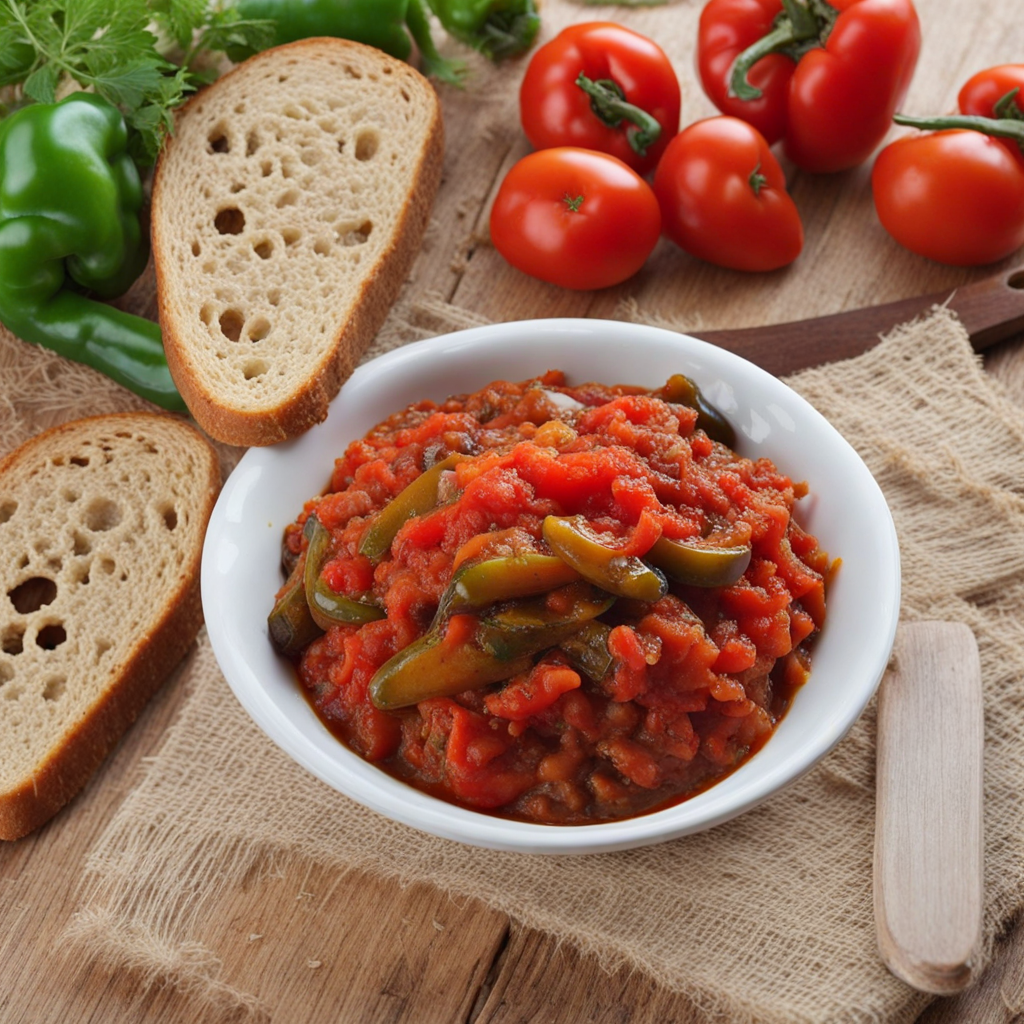Kiselo Mlyako
Kiselo Mlyako, often referred to as Bulgarian yogurt, is a staple of Bulgarian cuisine that offers a unique and delightful taste experience. This traditional dairy product is made from cow, goat, or sheep milk, which is fermented with specific live bacterial cultures, primarily Lactobacillus bulgaricus and Streptococcus thermophilus. The fermentation process not only thickens the milk but also imparts a distinctive tangy flavor, creamy texture, and rich aroma that sets it apart from other yogurts. The result is a product that is both refreshing and satisfying, making it a versatile addition to various dishes or a delightful snack on its own. One of the most enjoyable aspects of Kiselo Mlyako is its versatility in culinary applications. It can be enjoyed plain, drizzled with honey, or mixed with fruits and nuts for a wholesome breakfast. Additionally, it is often used in savory dishes, such as the popular Shopska salad, where it adds a creamy, tangy contrast to fresh vegetables. Kiselo Mlyako can also be incorporated into soups, sauces, and marinades, enhancing the overall flavor profile with its unique acidity and creaminess. This adaptability makes it a beloved ingredient in Bulgarian households and beyond. Moreover, Kiselo Mlyako is celebrated not just for its taste but also for its health benefits. Rich in probiotics, this yogurt supports gut health and digestion while being high in protein and calcium. Many Bulgarians enjoy it daily, often as part of breakfast or as an accompaniment to meals. Whether you're savoring its tangy flavor in a traditional Bulgarian dish or simply enjoying it as a nutritious snack, Kiselo Mlyako offers a delightful taste of Bulgaria that is sure to intrigue and satisfy your palate.
How It Became This Dish
The History of Кисело мляко (Kiselo Mlyako) from Bulgaria #### Origins Кисело мляко, or Bulgarian yogurt, is more than just a staple in Bulgarian cuisine; it is a symbol of cultural heritage and identity that has evolved over centuries. The word "кисело" translates to "sour," while "мляко" means "milk." This fermented dairy product is created through the fermentation of milk using specific bacterial cultures, primarily Lactobacillus bulgaricus and Streptococcus thermophilus, both of which are essential to its distinctive taste and health benefits. The origins of yogurt can be traced back to ancient civilizations, with evidence suggesting that fermentation of milk began around 5000 BCE. However, it is in Bulgaria that the process was refined and perfected, leading to the creation of the country's unique kiselo mlyako. The climate, the natural pastures, and the traditional methods of dairy farming in the region contributed to the development of this iconic food. #### Cultural Significance Kiselo mlyako is deeply ingrained in Bulgarian culture and daily life. It is often considered a "national treasure," and its production methods have been passed down through generations. In Bulgaria, yogurt is not just a food item; it is an integral part of the Bulgarian identity. It plays a vital role in various culinary traditions, from breakfast dishes to savory and sweet recipes, and is often consumed with bread, vegetables, or as a part of salads. The health benefits associated with kiselo mlyako have also contributed to its cultural significance. It is known for its probiotic properties, which aid digestion and contribute to overall health. In Bulgarian folklore, yogurt is celebrated for its nutritional value and is often referred to as a "magic food." Many Bulgarians believe that consuming kiselo mlyako can lead to longevity and vitality, mirroring the belief in the health benefits of fermented foods found in various cultures worldwide. #### Development Over Time The development of kiselo mlyako has seen various influences, particularly from the Ottoman Empire, which ruled Bulgaria for nearly five centuries. During this period, the art of dairy production and fermentation was further refined. The Turks introduced new methods of preserving and consuming dairy products, which helped shape the yogurt-making process. The 19th century marked a pivotal moment in the history of kiselo mlyako, particularly with the rise of nationalism and the search for a distinct Bulgarian identity. As Bulgarians sought to reclaim their cultural heritage, traditional foods like kiselo mlyako became a focal point of national pride. The establishment of dairy cooperatives and small-scale production facilities allowed for the standardization of yogurt production, ensuring quality and consistency. In the early 20th century, the health benefits of kiselo mlyako began to attract the attention of scientists and nutritionists. This led to increased research into its probiotic properties, culminating in a greater understanding of the beneficial effects of fermented foods on gut health. The development of modern dairy technology in the mid-20th century further revolutionized yogurt production, allowing for mass production while maintaining the unique characteristics of Bulgarian yogurt. Throughout the decades, kiselo mlyako has continued to evolve, adapting to contemporary tastes and dietary trends. Today, it is commonly found in supermarkets and health food stores across Europe and North America, often marketed as a health food due to its probiotic content. Various brands produce different types of yogurt, some flavored, some low-fat, and others organic, catering to a diverse audience while retaining the essence of the original Bulgarian product. #### Modern-Day Consumption In modern Bulgaria, kiselo mlyako is a ubiquitous part of the diet. It is enjoyed in a variety of ways: as a standalone snack, a base for smoothies, or as an ingredient in traditional dishes like shopska salad, banitsa, and tarator (a cold cucumber soup). The versatility of kiselo mlyako makes it a beloved ingredient in both everyday meals and festive occasions. Moreover, the rise of health consciousness has led to a renewed interest in traditional foods, including kiselo mlyako. Many Bulgarians and health enthusiasts around the world are seeking out authentic, locally sourced varieties that emphasize natural fermentation processes. This trend has spurred artisanal producers to embrace traditional methods of yogurt-making, ensuring that the essence of kiselo mlyako remains intact. #### Conclusion Kiselo mlyako is a cherished food that embodies the rich history and cultural identity of Bulgaria. From its ancient origins to its modern adaptations, this fermented dairy product has stood the test of time, evolving while maintaining its core significance. As the world becomes increasingly aware of the benefits of probiotics and fermented foods, kiselo mlyako is likely to continue to gain popularity, both in Bulgaria and beyond. This yogurt is not merely a food item; it is a reflection of a people's history, values, and connection to their land. Its continued relevance in Bulgarian cuisine and culture serves as a reminder of the importance of preserving culinary traditions in an ever-changing world. As we savor this delightful dairy product, we also partake in a centuries-old narrative that celebrates resilience, health, and community.
You may like
Discover local flavors from Bulgaria







